We put the Google Pixel 8 through our rigorous SBMARK Camera test suite to measure its performance in terms of photo, video and zoom quality from an end-user perspective. This article analyzes the behavior of the device in a series of tests and several common use cases and aims to highlight the most important results of our tests with an excerpt of the acquired data.
Przegląd
Najważniejsze dane aparatu:
- Główny: czujnik 50 MP 1/1.31″, piksele 1.2 μm, obiektyw z przysłoną f/1.68, OctaPD, OIS
- Ultraszerokokątny: 12 MP, piksele 1.25 µm, obiektyw z przysłoną f/2.2, pole widzenia 125.8°
ZALETY
- Przyjemne odcienie skóry na zdjęciach i filmach
- Szeroki zakres dynamiki zdjęć i filmów
- Dobra konsystencja
- Szybki autofokus
- Skuteczna stabilizacja wideo
Przed
- Czasami lekkie niedoświetlenie
- Sporadyczna niestabilność szumów pomiędzy kolejnymi zdjęciami oraz w scenach przy słabym oświetleniu i oświetlonych od tyłu na zdjęciach i filmach
- Utrata szczegółów przy średnim i długim teleobiektywie
The Google Pixel 8 offered excellent performance for its price segment in SBMARK Camera tests and was overall on par with current flagship models. The beautiful, vivid colors were a strong point, but the Pixel 8 also convinces in terms of image detail in all light conditions. Given the identical main camera, it’s no surprise that overall photo and video performance is similar to the Pixel 8 Pro. The differences were especially noticeable in terms of zoom performance.
Please note that while the photos were taken in Ultra HDR, our evaluations were performed using an SDR viewing workflow. This is because Ultra HDR is a very new Android format and we are still investigating the most appropriate HDR viewing tools to allow for a fair and thorough comparison. Because viewing HDR content depends on so many factors, such as the viewer’s screen and the application used, the photos displayed in this summary of test results are shown in SDR, which means they do not have the HDR gain map applied . Even viewers with HDR screens will only be able to see SDR versions of photos.
The Pixel 8’s HDR video mode produced excellent footage, with noticeably better results than the SDR mode in terms of exposure and color. Our testers also liked the good video exposure and effective stabilization.
Podsumowanie testu
O testach kamer SBMARK: Oceny kamer SBMARK odbywają się w laboratoriach i w rzeczywistych sytuacjach, przy użyciu różnorodnych obiektów. Wyniki opierają się na obiektywnych testach, których wyniki są obliczane bezpośrednio przez oprogramowanie pomiarowe w naszych konfiguracjach laboratoryjnych, oraz na testach percepcyjnych, w których wyrafinowany zestaw wskaźników umożliwia panelowi ekspertów w dziedzinie obrazowania porównanie aspektów jakości obrazów wymagających ludzkiej oceny. W testowanie smartfona angażuje się zespół inżynierów i techników przez około tydzień. Jakość zdjęć, powiększenia i wideo są oceniane oddzielnie, a następnie łączone w ogólny wynik porównywania aparatów na różnych urządzeniach. Aby uzyskać więcej informacji na temat protokołu kamery SBMARK, kliknij tutaj. Więcej szczegółów na temat wyników aparatów w smartfonach można znaleźć tutaj. W poniższej sekcji zestawiono kluczowe elementy kompleksowych testów i analiz SBMARK. Pełne oceny wydajności są dostępne na żądanie. Skontaktuj się z nami, aby dowiedzieć się, jak otrzymać pełny raport.
Wyniki aparatu Google Pixel 8
Ten wykres porównuje wyniki zdjęć, powiększeń i filmów SBMARK pomiędzy testowanym urządzeniem a urządzeniami referencyjnymi. Wskazane są również średnie i maksymalne wyniki w danym przedziale cenowym. Średnie i maksymalne oceny dla każdego segmentu cenowego wyliczane są na podstawie bazy testowanych urządzeń SBMARK.
Zdjęcie
152
HUAWEI P60 PRO
HUAWEI P60 PRO
O testach fotograficznych aparatu SBMARK
Na potrzeby oceny i analizy inżynierowie firmy SBMARK przechwytują i oceniają ponad 2,600 obrazów testowych zarówno w kontrolowanych środowiskach laboratoryjnych, jak i w naturalnych scenach na zewnątrz, w pomieszczeniach i przy słabym oświetleniu, przy użyciu domyślnych ustawień aparatu. Protokół fotograficzny został zaprojektowany z myślą o kluczowych przypadkach użycia i opiera się na typowych scenariuszach fotografowania, takich jak fotografia portretowa, rodzinna i krajobrazowa. Ocena odbywa się poprzez wizualne badanie obrazów w kontekście odniesienia do naturalnej sceny i przeprowadzanie obiektywnych pomiarów na laboratoryjnie zarejestrowanych obrazach graficznych w różnych warunkach oświetlenia od 1 do 1,000+ luksów i temperaturach barwowych od 2,300 K do 6,500 K.
In our photography tests, the Google Pixel 8 was among the best devices tested to date, offering overall excellent results in bright light. It was also the best phone without a dedicated camera, thanks to Google’s effective software solutions. The levels of detail captured were high, both in portraits and landscape shots. While image noise was well under control overall, some luminance noise could be evident in the shadow areas of the frame, especially in low-light conditions and in backlit scenes where the noise had a more pronounced appearance. grainy. Slight differences were visible compared to the flagship Pixel 8 Pro, but the overall image results were extremely similar.
Wyniki zdjęć Google Pixel 8
Testy fotograficzne analizują atrybuty jakości obrazu, takie jak ekspozycja, kolor, tekstura i szum, w różnych warunkach oświetleniowych. Działanie autofokusa i obecność artefaktów są również oceniane na wszystkich obrazach zarejestrowanych w kontrolowanych warunkach laboratoryjnych oraz na obrazach rzeczywistych. Wszystkie te atrybuty mają istotny wpływ na ostateczną jakość zdjęć rejestrowanych testowanym urządzeniem i mogą pomóc w zrozumieniu kluczowych mocnych i słabych stron aparatu.
Ekspozycja
113
Apple iPhone 15 Pro
Apple iPhone 15 Pro
Kolor
118
Apple iPhone 15 Pro Max
Apple iPhone 15 Pro Max
Exposure and color are the key attributes for technically good images. For exposure, the main attribute evaluated is the brightness of the main subject across various use cases such as landscape, portrait or still life. Other factors evaluated are contrast and dynamic range, e.g. the ability to make details visible in both bright and dark areas of the image. Repeatability is also important because it demonstrates the camera’s ability to provide the same rendering when shooting multiple images of the same scene.
Regarding color, the image quality attributes analyzed are skin tone rendering, white balance, color shading and repeatability. Regarding color and skin tone rendering, we penalize unnatural colors but respect the manufacturer’s choice of color signature.
Google Pixel 8 ogólnie zapewniał taką samą ekspozycję i odwzorowanie kolorów jak Pixel 8 Pro. Kolory były dobre, balans bieli był bardzo dokładny, a szeroki zakres dynamiki dorównywał najlepszym flagowym urządzeniom.
Google Pixel 8 – Ładna obsada i kolory, szeroki zakres dynamiki
Google Pixel 8 Pro – Ładna obsada i kolory, szeroki zakres dynamiki
Occasional slight underexposure, which might be noticeable in both low- and high-contrast scenes, was the Pixel 8’s biggest drawback in our tests. Our testers observed some slight differences between the Pixel 8 and 8 Pro, such as in the example scene below.
Google Pixel 8 – Lekko niedoświetlony, cold fusion
Google Pixel 8 Pro – Lekko niedoświetlone, przycięte pasemka na niebie
Apple iPhone 15 Pro Max – jaśniejszy wyświetlacz twarzy
Automatyczne ustawianie ostrości
110
HUAWEI P60 PRO
HUAWEI P60 PRO
Autofocus tests focus on focus accuracy, focus repeatability, shutter lag, and depth of field. Shutter delay is the difference between when the user presses the capture button and when the image is actually taken. It includes focusing speed and the device’s ability to capture images at the right time, the so-called “zero shutter lag” capability. While a shallow depth of field can be nice for single-subject portraits or close-ups, it can also pose a problem in some specific conditions such as group portraits; Both situations are tested. Focus accuracy is also evaluated in all real-world images taken, from infinity to close-up objects and low-light to outdoor conditions.
Nieregularność ostrości krawędzi i średnie opóźnienie strzału we wszystkich testowanych warunkach
Nieregularność i prędkość autofokusa: przenośne światło dzienne 1000Lux Δ0EV
Ten wykres ilustruje dokładność i szybkość ustawiania ostrości, a także zerowe opóźnienie migawki, pokazując ostrość krawędzi w funkcji czasu fotografowania zmierzonego przy użyciu konfiguracji AFHDR na serii zdjęć. Wszystkie zdjęcia zostały zrobione przy 1000 luksach przy oświetleniu światłem dziennym, 500 ms po rozmyciu. Ostrość krawędzi mierzona jest na czterech krawędziach mapy Martwych Liści, a czas fotografowania mierzony jest za pomocą uniwersalnego timera LED.
The Pixel 8’s autofocus was generally fast and accurate. The focus was almost always on the lens, even in difficult conditions. However, the Pixel 8 scored lower in this category than the category leader Huawei P60 Pro, which provided a wider depth of field in group shots.
![]()
Google Pixel 8 – Głębia ostrości
Google Pixel 8 – Niewielka utrata szczegółów obiektu w tle
![]()
Huawei P60 Pro – Głębia ostrości
Huawei P60 Pro – Dobra szczegółowość tematu w tle
![]()
Apple iPhone 15 Pro Max – Głębia ostrości
Apple iPhone 15 Pro Max – Utrata szczegółów obiektu w tle
Structure
115
Apple iPhone 15 Pro
Apple iPhone 15 Pro
Texture tests analyze the level of detail and texture of subjects in images taken in the lab and in real-life scenarios. For natural shots, special attention is paid to the level of detail in the light and dark areas of the image. Objective measurements are performed on map images taken under various lighting conditions from 1 to 1000 lux and different types of dynamic range conditions. The papers used are the proprietary SBMARK (DMC) paper and the Dead Leaves paper.
WYKRES SBMARK (DMC) Retencja szczegółów w porównaniu z poziomami luksów w warunkach statywu i trzymania w ręku
Ten wykres przedstawia ewolucję wyniku retencji szczegółów DMC w zależności od poziomu luksów, dla dwóch warunków retencji. Wynik DMC Detail Retention Score jest uzyskiwany na podstawie wskaźnika opartego na sztucznej inteligencji, przeszkolonego w celu oceny wydajności tekstur i szczegółów wybranych upraw z naszego wykresu SBMARK.
Hałas
101
Uhonoruj Magic5 Pro
Uhonoruj Magic5 Pro
Noise tests analyze various noise attributes such as intensity, chromaticity, grain, texture on real-life images and on graph images taken in the laboratory. For natural images, particular attention is paid to noise on faces, landscapes, but also on dark areas and high dynamic range conditions. Noise on moving objects is also evaluated on natural images. Objective measurements are performed on graph images taken under various conditions from 1 to 1000 lux and different types of dynamic range conditions. The graph used is the dead leaf graph and standardized measurement such as visual noise derived from ISO 15739.
Ewolucja szumu wizualnego wraz z poziomami oświetlenia w warunkach ręcznych
Ten wykres przedstawia ewolucję metryki hałasu wizualnego wraz z poziomem luksów w warunkach trzymanych w ręku. Metryka hałasu wizualnego to średnia pomiaru hałasu wizualnego we wszystkich obszarach wykresu Martwych Liści w konfiguracji AFHDR. Pomiar hałasu wizualnego SBMARK opiera się na normie ISO15739.
Artefakty
81
Xiaomi Redmi 12 5G
Xiaomi Redmi 12 5G
Artifact evaluation examines lens shading, chromatic aberrations, geometric distortion, ringing edges, halos, ghosting, quantization, unexpected color tone changes, among other types of possible unnatural effects on the photos. The more severe and frequent the artifact, the greater the point deduction from the score. The main artifacts observed and the corresponding point loss are listed below.
Główne kary za artefakty fotograficzne
Bokeh
70
HUAWEI P60 PRO
HUAWEI P60 PRO
Bokeh is tested in a dedicated mode, usually portrait or aperture mode, and analyzed by visually inspecting all images captured in the laboratory and in natural conditions. The goal is to reproduce a portrait photograph comparable to one taken with a DLSR and a wide aperture. The main image quality attributes that were paid attention to are depth estimation, artifacts, blur gradient, and the shape of the bokeh blur spotlights. The quality attributes of the portrait image (exposure, color, texture) are also taken into account.
Google Pixel 8 – Przyzwoita intensywność rozmycia, duże i kontrastowe reflektory
Google Pixel 8 Pro – mniejsza intensywność rozmycia, mniejsze i bardziej niejednorodne reflektory
The Google Pixel 8 provided an accurate and pleasing simulated bokeh effect. Our experts also noted that it provides better blur intensity and larger, more contrasty background spotlights than the Pixel 8 Pro.
Podgląd
64
Apple iPhone 14 Pro Max
Apple iPhone 14 Pro Max
Preview tests analyze the quality of the camera app’s image preview, with a focus on the difference between capture and preview, particularly regarding dynamic range and the application of bokeh. The smoothness of exposure, color and focus adaptation when switching from the minimum to the maximum available zoom factor is also evaluated. The preview frame rate is measured using the LED universal timer.
Google Pixel 8 – Podgląd – Renderowanie podobne do końcowego przechwytywania
Google Pixel 8 – przechwytywanie
Zbliżenie
129
HUAWEI P60 PRO
HUAWEI P60 PRO
Dowiedz się więcej o testach zoomu kamer SBMARK
Inżynierowie firmy SBMARK przechwytują i oceniają ponad 400 obrazów testowych w kontrolowanych warunkach laboratoryjnych oraz w naturalnych scenach na zewnątrz, w pomieszczeniach i przy słabym oświetleniu, korzystając z domyślnych ustawień aparatu i zoomu typu pinch przy różnych współczynnikach powiększenia, od bardzo szerokiego powiększenia do powiększenia o dużym zasięgu. Ocena dokonywana jest poprzez wizualne zbadanie obrazów odnoszących się do scen naturalnych i dokonanie obiektywnych pomiarów obrazów map zarejestrowanych w laboratorium w różnych warunkach od 20 do 1000 luksów i temperaturach barwowych od 2300 K do 6500 K.
The Google Pixel 8’s ultra-wide camera provided decent image quality overall, especially during daylight shooting. In low light, our testers observed more detail loss than the Pixel 8 Pro, which uses a larger image sensor and faster aperture (f/2.0 vs f/2.2), but the image quality The image was overall well balanced with very few artifacts.
In terms of camera hardware, the main difference compared to the flagship Google Pixel 8 Pro is the absence of a dedicated camera on the Pixel 8, meaning digital methods are used to achieve telephoto zoom. Thanks to the high-resolution sensor, the digital crop worked quite well up to 2X, with similar behavior to the Apple iPhone 15. Devices with a camera, such as the Google Pixel 8 Pro or iPhone 15 Pro Max, will provide better quality images when you zoom in further.
Wyniki Google Pixel 8 Zoom
Ten wykres ilustruje względne wyniki dla różnych ocenianych zakresów zoomu. Odcięta wyrażana jest w ogniskowej odpowiadającej 35 mm. Powiększone wyniki pojawiają się po prawej stronie, a powiększone wyniki po lewej stronie.
szeroki
109
HUAWEI P60 PRO
HUAWEI P60 PRO
These tests analyze the performance of the ultra-wide camera at different focal lengths from 12mm to 20mm. All image quality attributes are evaluated, with particular attention to artifacts such as chromatic aberrations, lens softness and distortion. The images below are an excerpt of the tested scenes.
![]()
Google Pixel 8 – ultraszeroki
Google Pixel 8 – dobre szczegóły
![]()
Google Pixel 8 Pro: ultraszeroki
Google Pixel 8 Pro – dobre detale i ostrość
![]()
Apple iPhone 15 Pro Max – ultraszeroki
Apple iPhone 15 Pro Max – Dobra szczegółowość i ostrość, trochę szumu
Tele
95
HUAWEI P60 PRO
HUAWEI P60 PRO
All image quality attributes are evaluated at focal lengths between approximately 40mm and 300mm, with particular attention to texture and detail. The score is derived from a series of objective measurements in the laboratory and perceptual analysis of real-life images.
SBMARK CHART (DMC) wskaźnik utrzymania szczegółów według ogniskowej
This graph shows the evolution of the DMC detail retention score versus the full-frame equivalent focal length for different lighting conditions. The x-axis represents the equivalent focal length measured for each corresponding shooting distance, and the y-axis represents the maximum score of the detail retention metric: a higher value means better quality. The large dots correspond to the zoom ratio available in the camera application user interface.
SBMARK CHART (DMC) wskaźnik utrzymania szczegółów według ogniskowej
This graph shows the evolution of the DMC detail retention score versus the full-frame equivalent focal length for different lighting conditions. The x-axis represents the equivalent focal length measured for each corresponding shooting distance, and the y-axis represents the maximum score of the detail retention metric: a higher value means better quality. The large dots correspond to the zoom ratio available in the camera application user interface.
SBMARK CHART (DMC) wskaźnik utrzymania szczegółów według ogniskowej
This graph shows the evolution of the DMC detail retention score versus the full-frame equivalent focal length for different lighting conditions. The x-axis represents the equivalent focal length measured for each corresponding shooting distance, and the y-axis represents the maximum score of the detail retention metric: a higher value means better quality. The large dots correspond to the zoom ratio available in the camera application user interface.
SBMARK CHART (DMC) wskaźnik utrzymania szczegółów według ogniskowej
This graph shows the evolution of the DMC detail retention score versus the full-frame equivalent focal length for different lighting conditions. The x-axis represents the equivalent focal length measured for each corresponding shooting distance, and the y-axis represents the maximum score of the detail retention metric: a higher value means better quality. The large dots correspond to the zoom ratio available in the camera application user interface.
![]()
Google Pixel 8 – teleobiektyw (120 mm)
Google Pixel 8 – brak szczegółów
![]()
Google Pixel 8 Pro – teleobiektyw (120 mm)
Google Pixel 8 Pro – dobre szczegóły
![]()
Apple iPhone 15 Pro Max – teleskopowy (120 mm)
Apple iPhone 15 Pro Max – dobry szczegół
wideo
148
Apple iPhone 15 Pro
Apple iPhone 15 Pro
O testach wideo kamery SBMARK
Inżynierowie SBMARK przechwytują i oceniają ponad 2.5 godziny materiału wideo w kontrolowanych warunkach laboratoryjnych oraz w naturalnych scenach przy słabym oświetleniu, zarówno w pomieszczeniach, jak i na zewnątrz, przy użyciu domyślnych ustawień aparatu. Ocena polega na oględzinach filmów naturalnych zarejestrowanych w różnych warunkach oraz dokonaniu obiektywnych pomiarów na filmach z wykresami zarejestrowanymi w laboratorium w różnych warunkach od 1 do 1000+ luksów i temperaturach barwowych od 2,300 K do 6,500 K.
In our tests, the Google Pixel 8 produced high-quality videos, with good color rendition, especially on skin tones, high levels of detail and good exposure, thanks to the HDR mode. Video stabilization was effective and autofocus was fast, smooth and accurate. Despite some low-light noise, the Pixel 8 has been the best device in its segment for video to date. For the purposes of our tests the video was recorded at 4K resolution and 30 fps in HDR mode.
Wyniki wideo Google Pixel 8
Testy wideo analizują te same atrybuty jakości obrazu, co w przypadku zdjęć, takie jak ekspozycja, kolor, tekstura lub szum, a także aspekty czasowe, takie jak szybkość, płynność i stabilność ekspozycji, balans bieli i przejścia autofokusa.
Ekspozycja
114
Apple iPhone 15 Pro
Apple iPhone 15 Pro
Kolor
115
Apple iPhone 15 Pro
Apple iPhone 15 Pro
Exposure tests evaluate the brightness of the main subject and the dynamic range, e.g. the ability to make details visible in both bright and dark areas of the image. The stability and temporal adaptation of the exposure are also analyzed.
Analiza kolorów jakości obrazu bada oddawanie barw, oddawanie odcieni skóry, balans bieli, cieniowanie kolorów, stabilność balansu bieli i jego adaptację przy zmianie światła.
Google Pixel 8 – Lekki niebieski odcień na początku klipu, który można szybko skorygować, szeroki zakres dynamiki z dobrą ochroną przed rozjaśnieniami
Google Pixel 8 Pro – takie samo zachowanie jak Pixel 8
Apple iPhone 15 Pro Max: doskonałe odwzorowanie odcieni skóry, cieplejszy balans bieli, przycinanie świateł, ale lepsza szczegółowość cieni
Structure
110
Oppo Znajdź X6 Pro
Oppo Znajdź X6 Pro
Texture tests analyze the level of detail and texture of real videos and graphics videos recorded in the lab. Natural video footage is assessed visually, paying particular attention to the level of detail in bright and dark areas. Objective measurements are performed on chart images taken under various conditions from 1 to 1000 lux. The cards used are SBMARK (DMC) card and Dead Leaves card.
WYKRES SBMARK (DMC) Wynik zachowania szczegółów wideo w funkcji poziomów luksów
Ten wykres pokazuje ewolucję wyniku zachowania szczegółów wideo DMC w zależności od poziomu luksów w filmie. Wynik DMC Detail Retention Score jest uzyskiwany na podstawie wskaźnika opartego na sztucznej inteligencji, przeszkolonego w celu oceny wydajności tekstur i szczegółów wybranych upraw z naszego wykresu SBMARK.
Hałas
107
Apple iPhone 15 Pro
Apple iPhone 15 Pro
Noise tests analyze various noise attributes such as intensity, chromaticity, grain, structure, temporal aspects on real video recordings and on videos of graphs taken in the laboratory. Natural videos are evaluated visually, with particular attention to noise in dark areas and high dynamic range conditions. Objective measurements are performed on graph videos recorded under various conditions from 1 to 1000 lux. The graph used is the SBMARK visual noise graph.
Ewolucja przestrzennego szumu wizualnego wraz z poziomem oświetlenia
Wykres ten przedstawia ewolucję przestrzennego szumu wizualnego wraz z poziomem luksów. Przestrzenny szum wizualny jest mierzony na wykresie szumu wizualnego w konfiguracji szumu wideo. Pomiar hałasu wizualnego SBMARK opiera się na normie ISO15739.
Czasowa ewolucja szumu wizualnego wraz z poziomem oświetlenia
Ten wykres pokazuje ewolucję tymczasowego szumu wizualnego wraz z poziomem luksów. Tymczasowy szum wizualny jest mierzony na wykresie szumu wizualnego w konfiguracji szumu wideo.
Stabilizacja
115
Apple iPhone 15 Pro
Apple iPhone 15 Pro
The stabilization rating checks the device’s ability to stabilize footage thanks to software or hardware technologies such as OIS, EIS or any other means. The evaluation examines residual motion, smoothness, yellow artifacts, and residual motion blur in walking and running use cases under various lighting conditions. The video below is an excerpt of one of the scenes tested.
Google Pixel 8 and 8 Pro provided great video stabilization. The results were very close to those of the iPhone 15 Pro Max, the device currently in first place in this category.
Google Pixel 8 – Bardzo dobra stabilizacja
Google Pixel 8 Pro – takie samo zachowanie jak Pixel 8
Apple iPhone 15 Pro Max – Doskonała stabilizacja, nawet podczas biegu
Artefakty
82
Xiaomi 12S Ultra
Xiaomi 12S Ultra
Artifacts are evaluated with MTF and ringing measurements on the SFR graph in the lab, as well as frame rate measurements using the LED universal timer. Natural videos are visually evaluated paying particular attention to artifacts such as aliasing, quantization, blocking, and hue shift, among others. The more severe and frequent the artifact, the greater the deduction of points from the score. The main artifacts and the corresponding point loss are listed below.
Najwyższe kary za artefakty wideo

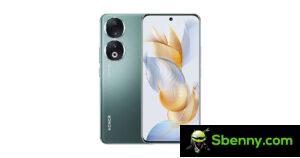
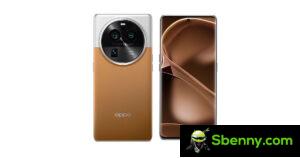
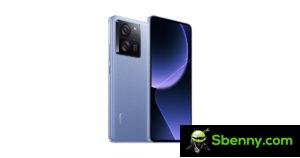
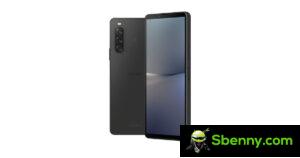
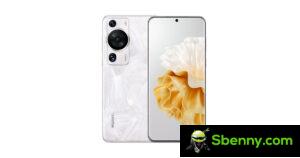
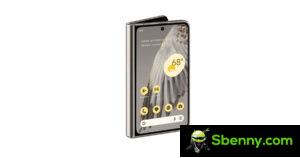
Rozpocznij nowy wątek